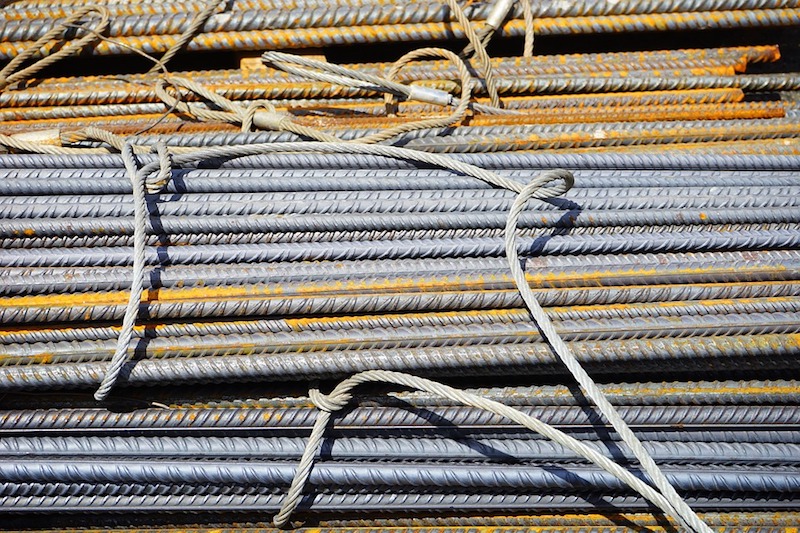When the Trump Administration imposed tariffs of 25% on steel and 10% on aluminum in March, it kicked off one of the nation’s most heated and far-reaching trade wars since the Smoot-Hawley Tariff Act of 1930. That legislation, which was expanded by President Hoover to include more than 20,000 products across the agriculture and industrial sectors, is viewed historically as an abject failure and a prime reason for the sustained economic depression through the 1930s.
Seven months into Trump’s trade war, the jury is still out. The circumstances today are markedly different than 88 years ago, of course. The economy is strong. But America is no longer the global manufacturing powerhouse it once was, and the nation has operated a global trade deficit of $100 billion or more annually since the late 1990s (last year: $795 billion).
Opponents of Trump’s actions on trade argue that the policies are outmoded, shortsighted measures that undermine a free trade economy. Pundits in Trump’s camp believe that any short-term hit to U.S. businesses is worth the potential long-term impact to the economy, particularly the manufacturing sector.
“For the last 25 years, China has been waging a trade war against the United States,” said Dan DiMicco, a senior trade adviser to President Trump’s campaign, during a talk at Metalcon last month. “A lot of us have been fighting that war, but without the resources to win it, until now.”
DiMicco should know. As the former CEO of Nucor Corp., the nation’s largest steel producer, he’s seen firsthand the power a government-controlled economy like China’s can wield. The nation is home to half of the world’s 10 largest steel production operations, and has been known to “dump cheap steel” on the world market to artificially deflate material prices, said DiMicco. More alarming, he said, is the potential threat to national security: “Our defense department says we can no longer supply parts we need for our military. You cannot be a leader of the world if you don’t have a strong manufacturing base and a strong steel industry.”
Meanwhile, the U.S. construction industry keeps humming along. Prices for aluminum- and steel-based materials have soared, but the construction sector seems to be taking it in stride. Nonresidential construction spending reached a record-high $762.7 billion in August, bolstered by a healthy backlog of work. And even when the impacts from the tariffs are factored in, construction industry economists remain largely upbeat with their forecasts for 2019 (tinyurl.com/y9qwcwln).
For now, Building Teams are finding a way to get their projects completed under increasingly onerous circumstances. Is there a tipping point when escalating costs will force developers to shelve projects? Or will prices stabilize to a “new normal” that keeps the work flowing? The answers, unfortunately, are anyone’s guess.
Related Stories
Construction Costs | May 31, 2024
Despite challenges, 2024 construction material prices continue to stabilize
Gordian’s Q2 2024 Quarterly Construction Cost Insights Report indicates that supply chain issues notwithstanding, many commodities are exhibiting price normalization.
Building Tech | May 21, 2024
In a world first, load-bearing concrete walls built with a 3D printer
A Germany-based construction engineering company says it has constructed the world’s first load-bearing concrete walls built with a 3D printer. Züblin built a new warehouse from a single 3D print for Strabag Baumaschinentechnik International in Stuttgart, Germany using a Putzmeister 3D printer.
Products and Materials | Apr 30, 2024
Top building products for April 2024
BD+C Editors break down April's top 15 building products, from CLiC On-demand Privacy Glass to NovaCore Thermal Insulated Sheathing.
Codes and Standards | Apr 30, 2024
Updated document details methods of testing fenestration for exterior walls
The Fenestration and Glazing Industry Alliance (FGIA) updated a document serving a recommended practice for determining test methodology for laboratory and field testing of exterior wall systems. The document pertains to products covered by an AAMA standard such as curtain walls, storefronts, window walls, and sloped glazing. AAMA 501-24, Methods of Test for Exterior Walls was last updated in 2015.
ProConnect Events | Apr 23, 2024
5 more ProConnect events scheduled for 2024, including all-new 'AEC Giants'
SGC Horizon present 7 ProConnect events in 2024.
75 Top Building Products | Apr 22, 2024
Enter today! BD+C's 75 Top Building Products for 2024
BD+C editors are now accepting submissions for the annual 75 Top Building Products awards. The winners will be featured in the November/December 2024 issue of Building Design+Construction.
Building Materials | Apr 22, 2024
Tacoma, Wash., investigating policy to reuse and recycle building materials
Tacoma, Wash., recently initiated a study to find ways to increase building material reuse through deconstruction and salvage. The city council unanimously voted to direct the city manager to investigate deconstruction options and estimate costs.
Brick and Masonry | Apr 4, 2024
Best in brick buildings: 9 projects take top honors in the Brick in Architecture Awards
The Ace Hotel Toronto, designed by Shim-Sutcliffe Architects, and the TCU Music Center by Bora Architecture & Interiors are among nine "Best in Class" winners and 44 overall winners in the Brick Industry Association's 2023 Brick in Architecture Awards.
Products and Materials | Mar 31, 2024
Top building products for March 2024
BD+C Editors break down March's top 15 building products, from multifamily-focused electronic locks to recyclable plastic panels.
Sustainability | Mar 21, 2024
World’s first TRUE-certified building project completed in California
GENESIS Marina, an expansive laboratory and office campus in Brisbane, Calif., is the world’s first Total Resource Use and Efficiency (TRUE)-certified construction endeavor. The certification recognizes projects that achieve outstanding levels of resource efficiency through waste reduction, reuse, and recycling practices.

















